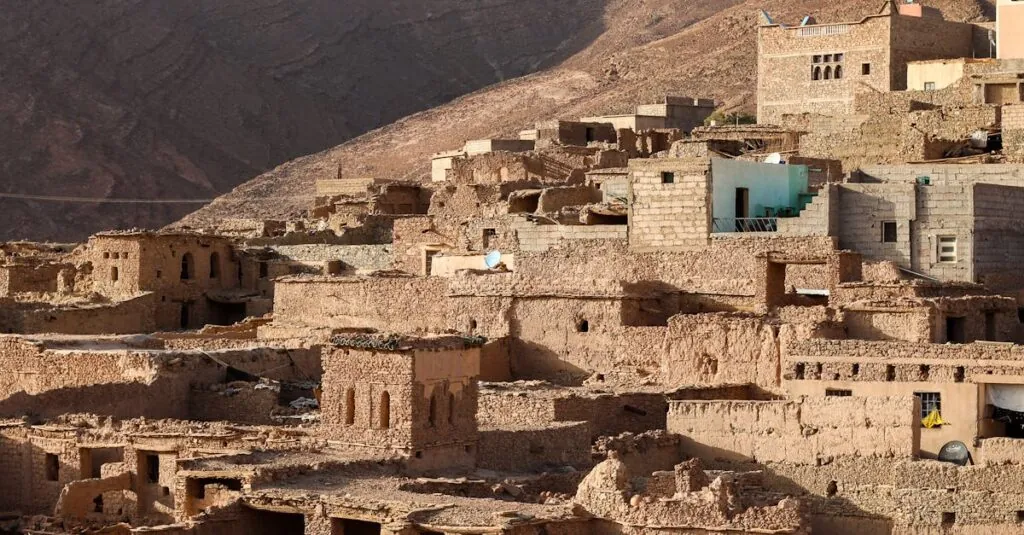Table of Contents
ToggleIn a world where cookie-cutter homes seem to sprout like weeds, historic preservation stands as a charming guardian of our architectural past. Imagine walking through a neighborhood where every building has a story, each brick whispering tales of yesteryear. It’s not just about saving old structures; it’s about preserving the soul of a community.
But let’s face it—who wouldn’t want to live in a house with character? Historic homes offer unique designs and a sense of nostalgia that modern constructions can’t replicate. Plus, they often come with a little extra charm, like creaky floors and the occasional ghost story. As we dive into the intersection of historic preservation and housing, it’s clear that keeping our past alive isn’t just good for history buffs; it’s vital for vibrant, thriving neighborhoods.
Overview of Historic Preservation and Housing
Historic preservation plays a significant role in maintaining the architectural identity of neighborhoods. Unique properties often attract residents and visitors alike, contributing to community pride and cultural richness. Homeowners in historic districts frequently appreciate the distinctiveness that older homes provide, which modern designs often lack.
Valuable resources are available for those interested in historic preservation. Various local, state, and federal programs offer financial assistance, including tax incentives for restoration projects. Many communities encourage adaptive reuse of historic buildings, which breathes new life into neglected structures while honoring their original character.
The presence of historic homes can positively impact surrounding property values. Studies indicate that neighborhoods with well-preserved architecture often experience higher property appreciation rates. Historic districts frequently experience more stable real estate markets, attracting buyers looking for unique living spaces with historic charm.
Engaging the community in preservation efforts is critical for success. Local organizations usually focus on educating residents about the benefits of maintaining these architectural treasures. Through workshops, tours, and events, communities build interest in their historic assets and foster a sense of stewardship.
Historically significant homes serve as valuable reminders of a community’s heritage. Their preservation not only enhances local culture but also supports sustainable development by reducing the demand for new construction. Each preserved home adds to the narrative of the surrounding area, linking its past to current generations.
Importance of Historic Preservation
Historic preservation serves as a vital link between past and present in communities. Recognizing its value can enhance local character while encouraging community engagement.
Cultural Heritage Preservation
Cultural heritage preservation maintains the unique identity of neighborhoods. Historic homes embody stories and traditions, enriching community experiences. They often serve as focal points for cultural events, fostering engagement among residents. Historical architecture reflects artistic styles and social trends of their times, contributing to the overall narrative of a region. Awareness of these assets inspires pride and encourages stewardship among those who live there.
Economic Benefits
Economic benefits related to historic preservation often include increased property values. Studies reveal that neighborhoods with preserved homes typically experience greater appreciation rates than newer developments. In addition, the presence of historic properties attracts tourism, boosting local businesses. Various economic incentives, such as tax credits, exist to support restoration efforts, making projects more feasible for homeowners. Enhanced historic areas also contribute to job creation within the construction and tourism sectors, fostering economic growth.
Challenges in Historic Preservation
Historic preservation encounters various challenges that can impede efforts to maintain architectural heritage and community character.
Regulatory Hurdles
Regulatory challenges often complicate preservation initiatives. Various local, state, and federal laws govern the restoration and renovation of historic structures. Compliance with these regulations can require extensive documentation and approval processes. Additionally, strict guidelines may limit alterations that homeowners or developers can make, which can hinder necessary repairs. Enhanced scrutiny during renovations can cause delays and add layers of complexity to projects. These hurdles sometimes deter property owners from engaging in preservation efforts altogether. The lack of clarity in regulations can further confuse stakeholders, making it essential to streamline processes and provide better guidance.
Financial Constraints
Financial constraints present significant obstacles to historic preservation. Restoration projects often involve higher costs compared to modern construction due to specialized materials and skilled labor requirements. Limited funding options can make it challenging for homeowners to finance these endeavors, even with tax credits and grants that may be available. Budget constraints can force property owners to compromise on quality or forgo critical repairs. Additionally, securing loans for preservation can be difficult, as lenders may perceive older properties as higher risks. The overall economic environment influences available resources, thereby impacting public and private investment in preservation projects.
Strategies for Successful Housing Preservation
Successful housing preservation hinges on community engagement and innovative funding solutions. Both elements enhance the effectiveness of preservation efforts while ensuring that historic homes remain integral to neighborhood identity.
Community Involvement
Community involvement drives successful preservation projects. Engaging local residents fosters a sense of ownership over historic structures. Volunteer programs often mobilize citizens, encouraging them to participate in restoration efforts. Educational workshops provide valuable knowledge about preservation techniques, ensuring that more individuals understand the importance of maintaining these homes. Local organizations frequently facilitate events that celebrate historic neighborhoods, enhancing community pride. Such initiatives inspire emotional connections to historic assets, making residents more likely to advocate for their preservation. Working together, communities create a united front to safeguard their character and heritage.
Innovative Funding Solutions
Access to innovative funding solutions supports historic preservation initiatives. Diverse financial options, such as community development grants and low-interest loans, make restoration projects financially feasible. Crowdfunding platforms allow residents to collectively invest in local preservation efforts. Tax incentives often encourage homeowners to undertake restoration projects by offsetting expenses. Partnering with nonprofit organizations can also unlock additional resources. These entities typically provide expertise and funds specifically designated for preservation. By diversifying funding sources, communities can overcome financial constraints, ensuring the longevity of historic homes and neighborhoods.
Case Studies in Historic Preservation and Housing
Various case studies highlight successful strategies and implementations in the realm of historic preservation and housing.
Successful Projects
One notable example, the restoration of the Old South Church in Boston, showcases how preservation can revitalize a community. Prioritizing historical integrity, the project included restoring original features and improving accessibility. The transformation gained widespread community support, attracting visitors and enhancing local culture. Another impressive project, the rehabilitation of the Fort Worth Stockyards, integrated historic preservation with modern services, boosting tourism and local businesses. Collaborative efforts among stakeholders ensured the project honored the area’s rich history while providing contemporary space for community events.
Lessons Learned
Collaboration among various stakeholders often emerges as a crucial lesson. Preservation projects that engage local communities foster a sense of ownership and shared responsibility. Managing expectations around costs and timelines remains vital; many projects extend longer than anticipated due to regulatory requirements. Financial planning and exploring diverse funding options enhance project viability. Adapting to community needs leads to greater success; incorporating local input helps to establish a strong connection between new uses and historical significance. Careful navigation of regulatory hurdles often dictates project outcomes. Streamlining processes and offering clear guidance simplifies restoration efforts.
Historic preservation is more than just maintaining buildings; it’s about nurturing community identity and cultural heritage. By valuing these architectural treasures, communities can foster pride and engagement while reaping economic benefits. The stories embedded in historic homes enrich the lives of residents and visitors alike, creating vibrant neighborhoods that reflect their unique histories.
Overcoming challenges in preservation requires collaboration and innovative funding solutions. Engaging local residents in these efforts ensures that the legacy of historic homes is preserved for future generations. As communities embrace their past, they not only enhance their present but also secure a sustainable future that honors their rich architectural heritage.







